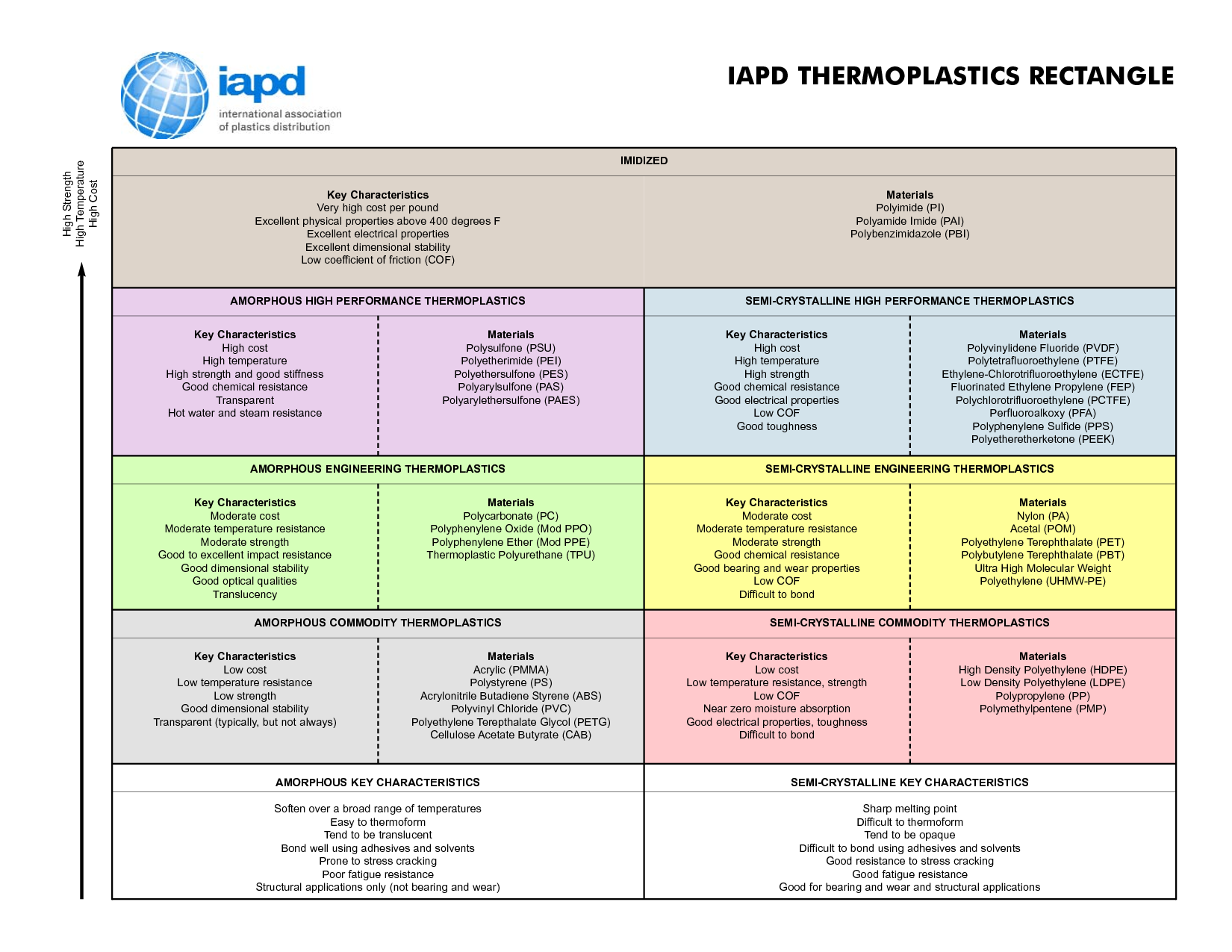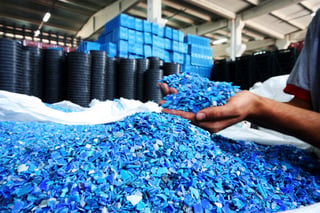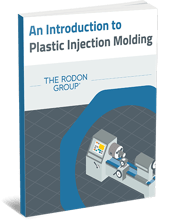Plastic injection molding is a highly versatile and efficient process that allows manufacturers to create a wide range of products and components from melted plastic resins. As a result of advances in molding technologies and material development, polymers and plastics have been incorporated into an increasingly wide array of products and applications. Featuring lightweight strength, aesthetic appeal, and durability, plastics are becoming the preferred material for industries ranging from consumer products to medical devices.
There are a wide variety of plastic resins available on the market, each of which exhibits unique characteristics that make it useful for particular applications. In order to ensure optimal performance, it is essential to select the correct resin for your needs. For the purposes of plastic manufacturing, a resin consists of plastic or polymers in a liquid or semi-solid state that can be heated, melted, and used to form plastic parts. In injection molding, the term resin refers to the melted thermoplastic or thermoset materials used during the injection molding process.
Considerations for Choosing Resin
New polymers and compounds are being introduced to the market regularly. The sheer number of choices can make injection molding materials selection a challenge. Selecting the right plastic resin requires a thorough understanding of the final product. The following questions can help you determine the best resin materials for your needs.
1. What is the intended purpose of the final part?
When selecting the right material for your application, you need to clearly outline the physical requirements of the part, including potential stressors, environmental conditions, chemical exposure, and expected service life of the product.
- How strong does the part need to be?
- Does the part need to be flexible or rigid?
- Does the part need to withstand unusual levels of pressure or weight?
- Will the parts be exposed to any chemicals or other elements?
- Will the parts be exposed to extreme temperatures or harsh environmental conditions?
- What is the part's life expectancy?
2. Are there special aesthetic considerations?
Choosing the right product includes finding a material that can exhibit the color, transparency, texture, and surface treatments you need. When selecting your resin, consider whether it will meet your product's intended appearance and function requirements.
- Is a particular transparency or color required?
- Is a particular texture or finish needed?
- Is there an existing color that needs to be matched?
- Should embossing be considered?
3. Do any regulatory requirements apply?
A crucial aspect of resin selection includes regulatory requirements for your component and its intended application. For example, if your part will be shipped internationally, used in food processing, applied to medical equipment, or incorporated into high-performance engineering applications, it is important that the material you select meets the necessary industry standards and regulatory requirements.
- What regulatory requirements must your part meet, including FDA, RoHS, NSF, or REACH?
- Does the product need to be safe for use by children?
- Does the part need to be food-safe?
A Plastic Primer – Thermoset vs. Thermoplastic
Plastics fall into two basic categories: thermoset plastics and thermoplastics. To help you remember the difference, think of thermosets just as the term implies; they are “set” during processing. When these plastics are heated, it creates a chemical reaction that sets the part into a permanent form. The chemical reaction is not reversible, so parts made with thermosets can’t be re-melted or reshaped. These materials can be a recycling challenge unless a bio-based polymer is used.
Thermoplastics are heated, then cooled in a mold to form a part. The molecular makeup of a thermoplastic doesn’t change when it is heated and cooled, so that it can be re-melted easily. For this reason, thermoplastics are easier to reuse and recycle. They comprise the majority of the manufactured polymer resins on the market today and are used in the injection molding process.
Fine-Tuning the Resin Selection
Thermoplastics are categorized by family and type. They fall into three broad categories or families: commodity resins, engineering resins, and specialty or high-performance resins. The high-performance resins also come with a higher cost, so commodity resins are often used for many everyday applications. Easy to process and inexpensive, commodity resins are usually found in typical mass-produced items like packaging. Engineering resins are more expensive but offer better strength and resistance to chemicals and environmental exposure.
Within each resin family, some resins have different morphology. Morphology describes the arrangement of molecules in a resin, which may fall into one of two categories, amorphous and semi-crystalline.
Amorphous resins have the following characteristics:
- Shrink less when cooled
- Better transparency
- Work well for tight-tolerance applications
- Tend to be brittle
- Low chemical resistance
Semi-crystalline resins have the following characteristics:
- Tend to be opaque
- Excellent abrasion and chemical resistances
- Less brittle
- Higher shrinkage rates
Examples of Available Resin Types
Finding the right resin requires a thorough understanding of the physical properties and beneficial qualities of the available materials. To assist you in finding the right plastic selection group for your needs, we have compiled the following injection molding material selection guide.

Amorphous
An example of an amorphous, commodity resin is polystyrene or PS. Like most amorphous resins, it is transparent and brittle, but it can be used in high-precision applications. It is one of the most widely
used resins and can be found in plastic cutlery, foam cups, and plates.
Higher up on the amorphous scale are the engineering resins such as polycarbonate or PC. It is temperature and flame resistant and has electrical insulating properties, so it is often used in electronic components.
An example of a specialty or high-performance amorphous resin is polyetherimide or (PEI). Like most amorphous resins, it offers strength and heat resistance. However, unlike most other amorphous materials it is also chemically resistant, thus often found in the aerospace industry.
Semi-crystalline
An inexpensive semi-crystalline commodity resin is polypropylene or PP. As with most semi-crystalline polymers, it is flexible and chemically resistant. The low cost makes this resin the choice for many applications such as bottles, packaging, and pipes.
A popular engineering, semi-crystalline resin is polyamide (PA or Nylon). PA offers chemical and abrasion resistance as well as low shrinkage and warp. There are bio-based versions available making this material an earth-friendly alternative. The toughness of the material makes it a light-weight alternative to metal in automotive applications.
PEEK or polyetheretherketone is one of the most widely used semi-crystalline high-performance resins. This resin offers strength as well as heat and chemical resistance and is often used in demanding environments including bearings, pumps, and medical implants.

Amorphous Resins

- ABS: ABS combines the strength and rigidity of acrylonitrile and styrene polymers with the toughness of polybutadiene rubber. ABS is easily molded and provides colorfast, glossy effect with a high-quality surface finish. This plastic polymer has no exact melting point.
- HIPS: High-Impact polysyrene (HIPS) provides good impact resistance, excellent machinability, fine dimensional stability, outstanding aesthetic qualities, and highly customizable surfaces. HIPS can be printed, glued, bonded, and decorated easily. It's also very cost-efficient.
- Polyetherimide (PEI): PEI is a good example of a specialty or high-performance amorphous resin. PEI offers strength and heat resistance like most amorphous resins. Unlike most other amorphous materials, however, it is also chemically resistant, making it highly useful for the aerospace industry.
- Polycarbonate (PC): Higher up on the amorphous scale are the engineering resins such as polycarbonate. PC is temperature- and flame-resistant and has electrical insulating properties, often used in electronic components.
- Polystyrene (PS): An example of an amorphous, commodity resin is polystyrene. Like most amorphous resins, PS is transparent and brittle, but it can be used in high-precision applications. It is one of the most widely used resins and can be found in plastic cutlery, foam cups, and plates.
Semicrystalline Resins
- Polyetheretherketone (PEEK): PEEK is one of the most widely used semi-crystalline high-performance resins. This resin offers strength, heat resistance, and chemical resistance and is often used in demanding environments, including bearings, pumps, and medical implants.
- Polyamide (PA)/Nylon: Polyamide, more commonly referred to as nylon, is a popular semi-crystalline engineering resin. PA offers chemical and abrasion resistance, as well as low shrinkage and warp. There are bio-based versions available for applications that require an eco-friendly solution. The toughness of the material makes it a lightweight alternative to metal in many automotive applications.
- Polypropylene (PP): PP is an inexpensive semi-crystalline commodity resin. As with most semi-crystalline polymers, it is flexible and chemically resistant. The low cost makes this resin the preferred choice for many applications such as bottles, packaging, and pipes.
- Celcon®:Celon® is a common brand name for acetal, also known as polyoxymethylene (POM), polyacetal, or polyformaldehyde. This thermoplastic offers outstanding toughness, excellent wear, creep resistance and chemical solvent resistance, easy colorization, good heat distortion, and low moisture absorption. Celcon® also provides high stiffness and excellent dimensional stability.
- LDPE: The most flexible type of polyethylene, low-density polyethylene (LDPE) offers superior moisture resistance, high-impact strength, good chemical resistance, and translucence. A low-cost option, LDPE is also weatherproof and can be easily processed with most methods.
Finding the Right Resin
 Making your plastic material selection can be a daunting task, but the selection process can be divided into a few simple steps. Begin by choosing the family of materials that will give you most of the properties you want. Once determined, select the appropriate grade of material resin. Online databases can assist in providing a benchmark from which to work. UL Prospector (formerly IDES) is one of the most well-known databases for material selection. MAT Web also has an extensive database, and The British Plastics Federation provides high-level data and descriptions.
Making your plastic material selection can be a daunting task, but the selection process can be divided into a few simple steps. Begin by choosing the family of materials that will give you most of the properties you want. Once determined, select the appropriate grade of material resin. Online databases can assist in providing a benchmark from which to work. UL Prospector (formerly IDES) is one of the most well-known databases for material selection. MAT Web also has an extensive database, and The British Plastics Federation provides high-level data and descriptions.
Plastic Additives to Improve Characteristics
Various resins have distinct properties for which they are known. As we have seen, the three resin families (commodity, engineering, and high-performance/specialty) contain both amorphous and semi-crystalline alternatives. The higher the performance, however, the higher the cost. To help keep costs low, many manufacturers use additives or fillers to impart additional qualities to affordable materials at a lower cost.
These additives can be used to improve performance or convey other characteristics to the final product. Below are some of the most common additive applications:
- Antimicrobial – Additives used in food-related applications or high-contact consumer products.
- Anti-statics – Additives that decrease static electricity conduction, often used in sensitive electronics.
- Plasticizers and fibers – Plasticizers make a resin more pliable, whereas fibers add strength and stiffness.
- Flame retardants – These additives make products resistant to combustion.
- Optical brighteners – Additives used to improve whiteness.
- Colorants - Additives that add color or special effects, such as fluorescence or pearlescence.
The Final Selection
Choosing the right material for a project is one of the most important factors in creating perfect plastic parts. The advances in polymer science have contributed to developing a large selection of resins from which to choose. It is important to work with an injection molder that has experience with a variety of resins and applications, including resins that are compliant with FDA, RoHS, REACH, and NSF.
Over the years, The Rodon Group has developed strategic relationships with the country's best resin suppliers. We have over 60 years of experience using certified commodity and engineering resins that adhere to our stringent manufacturing standards. Unless you are well-versed in resin selection, you should always consult with your injection molder to determine the best material for a particular project.
The Rodon Group, is committed to providing our customers with the highest quality plastic injection molded products in the industry. We understand the unique challenges facing product developers and manufacturers in every industry. We are not just manufacturers — we are innovators. We make it our goal to ensure that you have the perfect material solutions for every application.
To learn more about our extensive selection of resin materials and injection molding services, contact our experts today










Comments